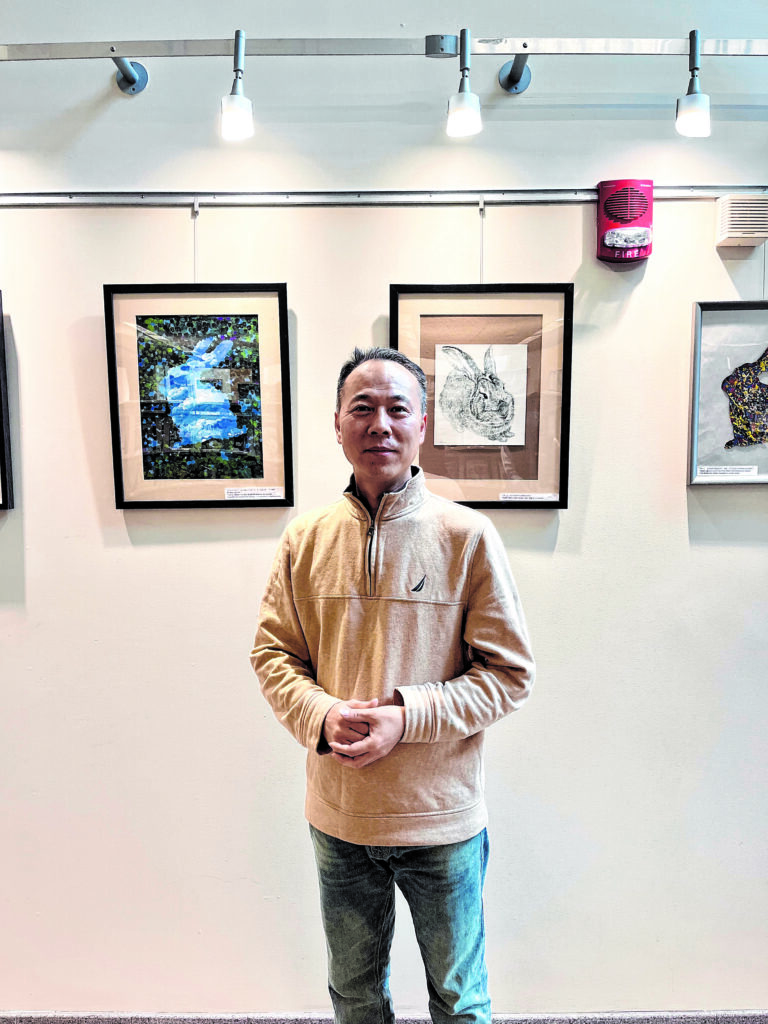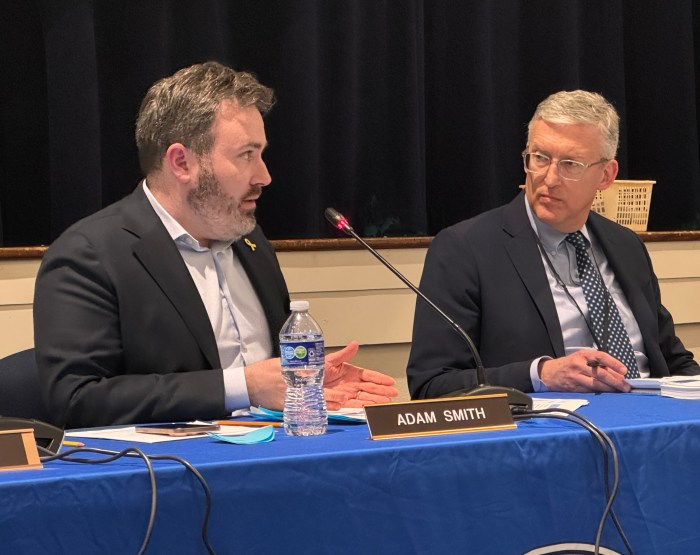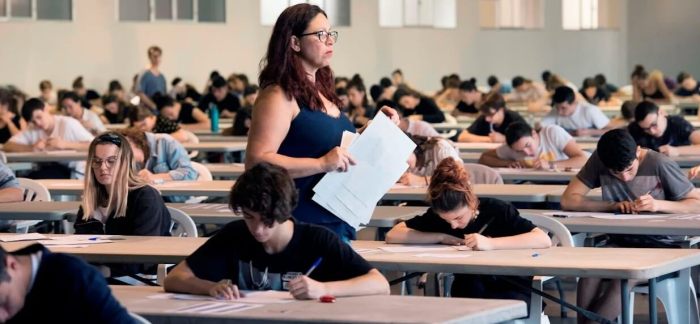By Jennifer Corr
jcorr@antonnews.com
From Beijing to New York City, and now, Syosset Public Library’s art gallery, Xiangdong Shi’s artwork has been seen by many eyes.
Much of his work featured in this gallery is a manifestation of what he sees around him. Some of his works capture the Chinese architecture he saw when he lived in Beijing or urban landscapes, such as those in Flushing, Queens.
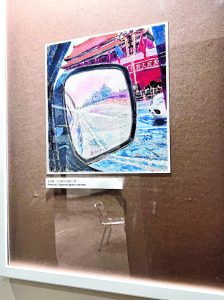
(Photos taken by Jennifer Corr, art work by Xiangdong Shi)
“I lived in Beijing for more than 20 years,” Shi told the Syosset Jericho Tribune. “Beijing is a city where traditional culture and modern civilization coexist. I have been living in the United States for nearly six years, and I have deeply experienced the differences between New York, Long Island and Beijing, so the theme of showing the two countries, the U.S. and China, and two cities, New York and Beijing also reflects the deep feelings in my heart.”
He also enjoys recording everyday life through saving packages of food or medicine and incorporating them into his work.
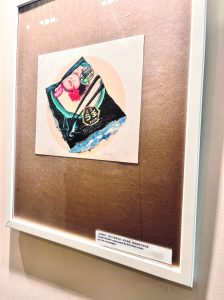
“These are all common things in our daily life, but few artists put them into their paintings. I think these details and everyday objects in life are very worthy of being recorded and expressed by art,” Shi said. “They will make us calm down and carefully recall the forgotten details in life. When we see them, we will have a warm impulse in our hearts to calm down and carefully recall the forgotten details in life.”
And to celebrate the Lunar New Year, Shi completed multiple works depicting rabbits, as it’s the Year of Rabbit, one of the 12 Chinese Zodiac Animals. Shi led an art class at the Syosset Public Library cafe where participants could create their own Rabbit.
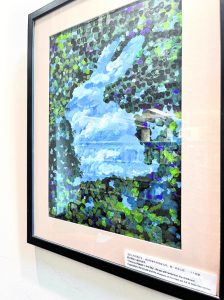
Shi was born in 1972 in Luoyang, Henan Province, which is known for its ancient history and culture.
“My hometown, Luoyang, is older than Rome, with a city history of more than 3,000 years,” Shi said. “I lived in the old district of Luoyang, which is the most traditional area in the city. From young age, we got used to living with old buildings left from the Ming and Qing dynasties. My high school was a complete ancient building complex, which is now turned into a museum. Luoyang has some of the oldest historical relics in China, the most famous Longmen Grottoes, White Horse Temple, and Luoyang Museum. The accumulation of these traditional civilizations and arts has had a very important impact on my art career. I didn’t feel it when I was young. Now I think about it, its influence is actually a culture-gene.”
He went on to study fine arts at Tsinghua University Academy of Fine Arts in Beijing, graduating with his doctorate in fine arts in 2005. He quickly found success, having his work exhibited in Beijing and other locations. It was at school he’d have the opportunity to study Dunhuang murals, which can be found at the Mogao Caves located on the Silk Road, and Ancient Chinese meticulous paintings, a brush technique that, according to Britannica, delimits details precisely without independent or expressive variation. “This school opened my eyes wide, expanding from sketching and oil painting to murals and mixed media arts, from realism to modernism, contemporary art, and even turned around into Chinese classical art,” Shi said, adding that when he attended the university it was then called The Central Academy of Art and Design before it merged with Tsinghua University. “In 1993, when I was still a third-year college student, my works were selected for the National Oil Painting Annual Exhibition and the Sino-Japanese Modern Painting Exhibition, and some other important exhibitions. I received a few awards. In my early creation, I pursued realistic techniques, and incorporated many conceptual colors. Since then, I began to explore a wider field, and integrated decoration and abstract elements into my art creation.”
In 2001, he designed the commemorative stamps for the 21st World University Games.
“I was a Ph.D. student, and this design was not entrusted to me alone, but I was invited to participate in a design competition with two other well-known designers, and my design was finally selected,” Shi said. “At that time, I was very encouraged, because the competitors were very strong, so I suddenly felt that I was not bad. Many media came to interview me at that time, and I still have some newspapers from that time.”
Shi started his new life with his wife and his daughter in Syosset in 2017. He could remember how it was snowing when they got off the plane, but it was warm in Beijing, with peach flowers in full bloom. This change from living in China to the United States, Shi said, stimulated his mind when it came to art, bringing new inspirations. This is when he started taking inspiration in the details of those little packages of food, drinks and other things that are often thrown away.
Shi’s work would go on to garner much attention at his exhibition at the First Bank Gallery in New York City for its visual description of the living environment in China.
“In Manhattan, New York, you can reach the top of the Empire State Building as soon as you look up. In Beijing, what attracts you the most is not the high-rise buildings, but the ancient palaces and gardens seen from standing on the high-rise buildings,” Shi said. “Without the Empire State Building, New York would be less. Similarly, without the sense of the history of those ancient constructions, Beijing would be less. I am a nostalgic person and a sensitive and detail-oriented person. I had lived in Beijing for more than 20 years and now in the U.S. for six years. They have become part of my life, so they must be in my work.”
Shi’s artwork will be featured in the gallery through Feb. 3.
—Librarian Yin Li provided translation to make this story possible.




